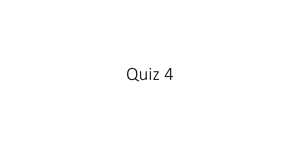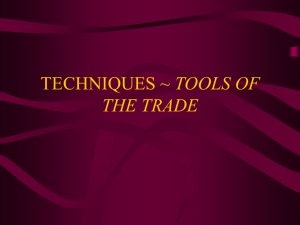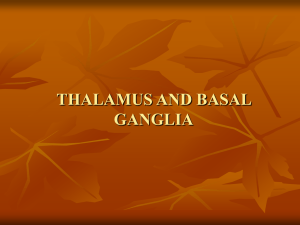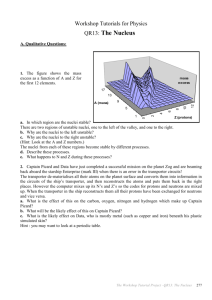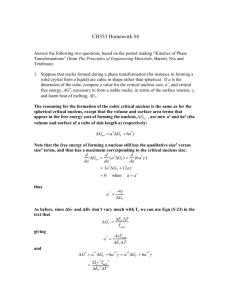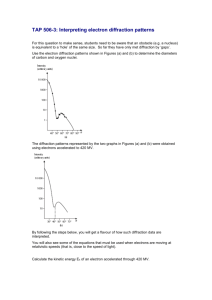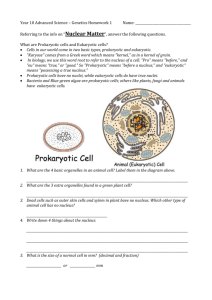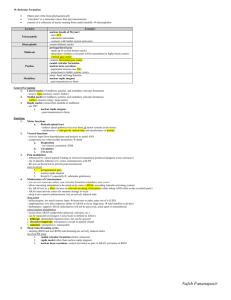Study guide - People Server at UNCW
advertisement
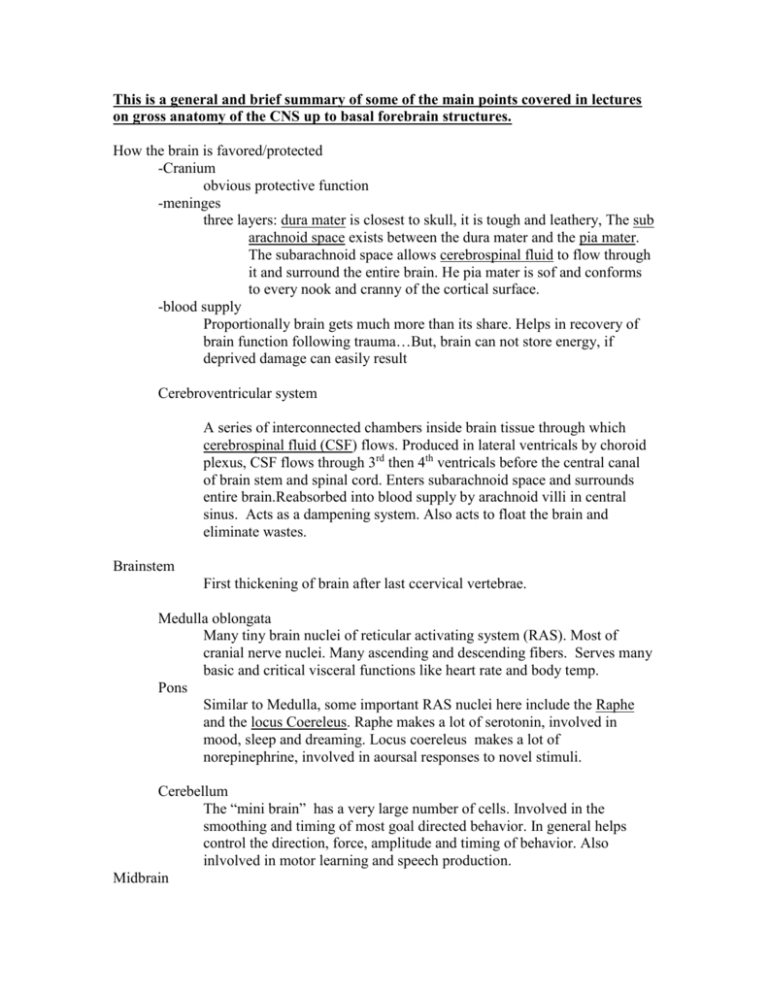
This is a general and brief summary of some of the main points covered in lectures on gross anatomy of the CNS up to basal forebrain structures. How the brain is favored/protected -Cranium obvious protective function -meninges three layers: dura mater is closest to skull, it is tough and leathery, The sub arachnoid space exists between the dura mater and the pia mater. The subarachnoid space allows cerebrospinal fluid to flow through it and surround the entire brain. He pia mater is sof and conforms to every nook and cranny of the cortical surface. -blood supply Proportionally brain gets much more than its share. Helps in recovery of brain function following trauma…But, brain can not store energy, if deprived damage can easily result Cerebroventricular system A series of interconnected chambers inside brain tissue through which cerebrospinal fluid (CSF) flows. Produced in lateral ventricals by choroid plexus, CSF flows through 3rd then 4th ventricals before the central canal of brain stem and spinal cord. Enters subarachnoid space and surrounds entire brain.Reabsorbed into blood supply by arachnoid villi in central sinus. Acts as a dampening system. Also acts to float the brain and eliminate wastes. Brainstem First thickening of brain after last ccervical vertebrae. Medulla oblongata Many tiny brain nuclei of reticular activating system (RAS). Most of cranial nerve nuclei. Many ascending and descending fibers. Serves many basic and critical visceral functions like heart rate and body temp. Pons Similar to Medulla, some important RAS nuclei here include the Raphe and the locus Coereleus. Raphe makes a lot of serotonin, involved in mood, sleep and dreaming. Locus coereleus makes a lot of norepinephrine, involved in aoursal responses to novel stimuli. Cerebellum The “mini brain” has a very large number of cells. Involved in the smoothing and timing of most goal directed behavior. In general helps control the direction, force, amplitude and timing of behavior. Also inlvolved in motor learning and speech production. Midbrain Tectum Superior and inferior colliculi Superior colliculi are involved in relflex orientation to visual stimuli while the inferior colliculi are involved in reflex orientation to auditory stimuli. Tegmentum In general the entire ventral surface of the midbrain region, but you can’t see the structures from the outside Substantia Nigra Dark looking nuclei, produces a lot of dopamine. Projects to Neostriatum. Parkinsons disease attributed to decreased dopamine in neostriatum because of cell loss in substantia nigra. VTA Ventral tegmental area, also produces lots of dopamine. Projects to limbic system structures esp. the nucleus accumbens. Involved in the experience of reward…drug addiction? Red nucleus Major output nucleus of the cerebellum. Cortical output commands pick up cerebellar input here. Periaqueductal grey Surrounds the cerebral aqueduct ( where CSF flows through). Appears relatively gray. Contains a lot of the peptide neurotransmitters endorphin and enkephalin. Involved in pain perception. Read chapter text dealing with the gate control theory of pain. Basal Forebrain Thalamus (Diencephalon) Complex structure. Large, egg-like. Many sub nuclei. Chiefly involved in the relay of sensory information to cerebral cortex. Hypothalamus (Diencephalon) Just anterior to and below the thalamus, the hypothalamus is also complex with many subnuclei. Recieves lots of input about visceral activity. Produces impulses that modulate the 4 Fs…Haha feeding, fighting, fleeing and mating. Has intimate connections with the pituitary gland. Pituitary gland Not really brain tissue, is glandular. Produces many hormones that are released into circulation and have very strong influences on a variety of functions. Limbic System Structures Collectively involved in affective responses to the world. These structures are interconnected..leading to conceptions about a “ stream of emotionality.” Amygdala Almond shaped. Found at the terminal end of the hippocampus. May be involved in reward and aggression Hippocampus Large seahorse-shaped structure. Memory processing? Anxiety responses? Septum Found right on midline. May be involved in drug reward along with nucleus accumbens. Basal Ganglia Collectively involved in the production of “behavioral programs”…chunks of behavior that are complex but that do not necessarily involve consciousness (walking). Neostriatum and Substantia Nigra Neostriatum is really the caudate nucleus and the putamen. The “Go” system, the behavioral grease…. Problems here produce parkinsons-like syndromes Globus Pallidus Recieves a lot of input from neostriatum. The stop system, the behavioral brakes. Problems here produce problems in controlling behavior like huntingons chorea, tourettes or ballisms. Subthalamus and Epithalamus Damage is associated with ballism…eg…see Wilsons disease
